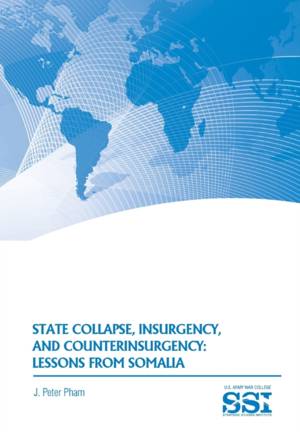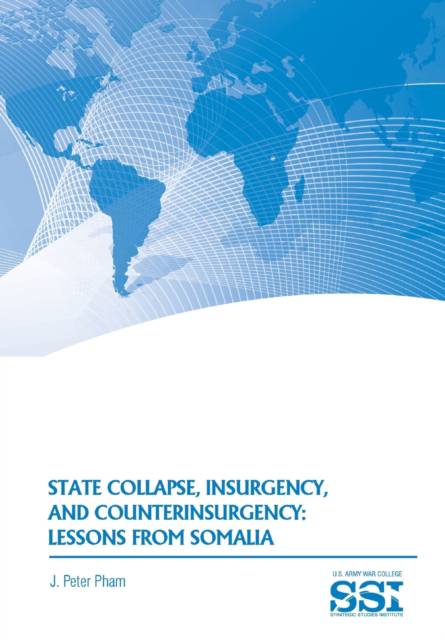
Bedankt voor het vertrouwen het afgelopen jaar! Om jou te bedanken bieden we GRATIS verzending (in België) aan op alles gedurende de hele maand januari.
- Afhalen na 1 uur in een winkel met voorraad
- In januari gratis thuislevering in België
- Ruim aanbod met 7 miljoen producten
Bedankt voor het vertrouwen het afgelopen jaar! Om jou te bedanken bieden we GRATIS verzending (in België) aan op alles gedurende de hele maand januari.
- Afhalen na 1 uur in een winkel met voorraad
- In januari gratis thuislevering in België
- Ruim aanbod met 7 miljoen producten
Zoeken
State Collapse, Insurgency, and Counterinsurgency
Lessons from Somalia
Peter J Pham, Strategic Studies Institute, Army War College
Paperback | Engels
€ 24,45
+ 48 punten
Omschrijving
For more than 2 decades, Somalia has been the prime example of a collapsed state, resisting multiple attempts to reconstitute a central government, with the current internationally-backed regime of the "Federal Republic of Somalia" struggling just to maintain its hold on the capital and the southeastern littoral-thanks only to the presence of a more than 17,000-strong African Union peacekeeping force. Despite the desultory record, the apparent speedy collapse since late 2011 of the insurgency spearheaded by the Harakat al-Shabaab al-Mujahideen (Movement of Warrior Youth, al-Shabaab)-a militant Islamist movement with al-Qaeda links-has made it fashionable within some political and military circles to cite with little nuance the "Somalia model" as a prescription for other conflicts in Africa, including the fight in Mali against al-Qaeda in the Islamic Maghreb and its allies. This monograph takes a closer look at the situation in order to draw out the real lessons from the failures and successes of the counterinsurgency effort in Somalia.
Specificaties
Betrokkenen
- Auteur(s):
- Uitgeverij:
Inhoud
- Aantal bladzijden:
- 80
- Taal:
- Engels
Eigenschappen
- Productcode (EAN):
- 9781782665403
- Verschijningsdatum:
- 14/11/2013
- Uitvoering:
- Paperback
- Formaat:
- Trade paperback (VS)
- Afmetingen:
- 170 mm x 244 mm
- Gewicht:
- 140 g

Alleen bij Standaard Boekhandel
+ 48 punten op je klantenkaart van Standaard Boekhandel
Beoordelingen
We publiceren alleen reviews die voldoen aan de voorwaarden voor reviews. Bekijk onze voorwaarden voor reviews.









